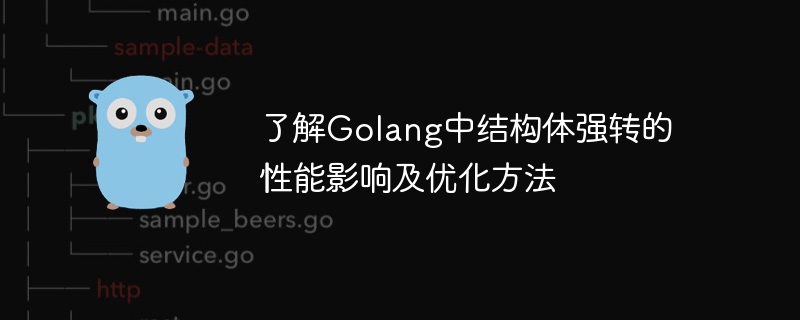
Forcing Go structures will affect performance due to additional memory allocation and type checking. Optimization methods include: 1. Use direct assignment (only when the memory layout is the same); 2. Use reflection to handle conversion of different types of structures.

The performance impact and optimization method of Go structure coercion
In the Go language, structure coercion is a common Operation, which allows converting a structure of one type to another type. However, this cast may have a performance impact because it requires additional memory allocation and type checking.
Performance impact
Compared with direct assignment, the performance overhead of structure cast is mainly reflected in the following aspects:
Optimization method
In order to optimize the performance of forced transfer of structures, the following methods can be adopted:
1. Direct assignment
If the target type and source type have the same memory layout, you can consider using direct assignment instead of cast. For example:
type A struct {
Name string
}
type B struct {
Name string
}
b := B{Name: "example"}
// 直接赋值而不强转
a := A{b.Name}2. Use reflection
If you need to convert different types of structures to each other, you can use reflection. Reflection can be operated through the reflect.Value type, which provides an interface for operating reflected values. For example:
type A struct {
Name string
}
type B struct {The above is the detailed content of Understand the performance impact and optimization methods of structure coercion in Golang. For more information, please follow other related articles on the PHP Chinese website!




